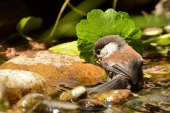
 14
14




Idle dreamer
 8
8




Idle dreamer
 8
8




 1
1





Idle dreamer
 3
3





 8
8








Idle dreamer
 2
2




Nicole Alderman wrote:But, I've also found growing food doesn't give me that many calories, especially lots of protein, so maybe I'm just not utilizing my resources as well as I could! It also makes me realize that in a "end of the world scenario," I'd likely be eating a whole lot less protien than my body seems to need to operate well. I don't have the asnwer to that problem, but I will keep searching!
Idle dreamer
 2
2




We're sustainable in the suburbs. Aquaponics. Food gardens. Solar energy. Come and join our tribe at http://www.chillipreppers.com.au
 2
2




 2
2
 1
1




Living in Anjou , France,
For the many not for the few
http://www.permies.com/t/80/31583/projects/Permie-Pennies-France#330873
 2
2




T Holden wrote:But what if the "native garden" is full of invasive plants and has not been allowed to burn naturally to control those native species that would otherwise be controlled through natural burns and what if these issues cause the zone 5 to be a mess of weedy invasives...and you want to bring it back to it's natural state. Then, is it zone 4.5?
 1
1




David Livingston wrote:. There is no prestine wilderness . So is there any true zone 5?
Idle dreamer




Kyrt Ryder wrote:It just feels wrong to exclude humanity from the natural cycle the way your comment seems to imply.
Idle dreamer




Nicole Alderman wrote:
I think the zone system is defined by how much you affect the area, as well as how native it is. If you're doing a lot of restoration work, you're doing good things (I consider creating a more diverse habitat "good"), but they do take a lot of time and effort. If you're only burning it once a year to maintain a camas prairie ecosystem (as the original inhabitiants in my area did here), that's a whole lot less intensive then having to pull bindweed every day. At least, that's what I think! I'd love to see other's opinions!
Idle dreamer
 5
5





 1
1




Tyler Ludens wrote:
Kyrt Ryder wrote:It just feels wrong to exclude humanity from the natural cycle the way your comment seems to imply.
I return to Mollison's definition of zone 5 : "We characterise this zone as the natural, unmanaged environment used for occasional foraging, recreation, or just let be. This is where we learn the rules that we try to apply elsewhere."
To me, that is not excluding humanity. To me, that is including humanity as a student of nature, learning the lessons we can apply to our own gardens. Recreation also implies enjoyment of nature, not exclusion. Mollison is, I think, talking about setting land aside which does not provide any product for humans besides all of the ecosystem functions upon which we depend for our lives.
 1
1




 3
3




Kyrt Ryder wrote:
So far as I'm aware Mollison's primary goal in Zone 5 was encouraging Permaculturalists to leave the bush alone, not to create productive human systems and then give them back to the bush. [Not saying there isn't a certain amount of place for the latter, but that seems more like a multi-generational project to me.]
Idle dreamer
 1
1




Rene Nijstad wrote:I know there are a lot of people who cannot afford to take a PDC, and some who somehow feel it's a pyramid scheme, but why don't we all at least get the book?
 . So, thank you for suppling the quotes and knowledge for those of us who can't afford it but would love to learn form it!
. So, thank you for suppling the quotes and knowledge for those of us who can't afford it but would love to learn form it! 5
5





|
Blood pressure normal? What do I change to get "magnificent"? Maybe this tiny ad?
The new purple deck of permaculture playing cards
https://www.kickstarter.com/projects/paulwheaton/garden-cards
|








